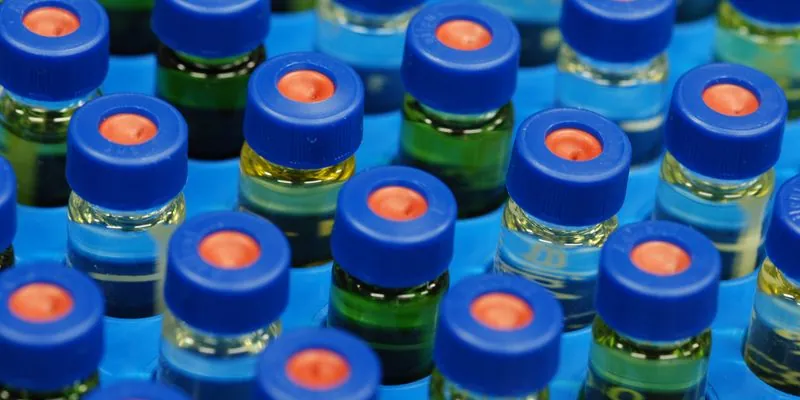
Revolutionizing Mass Spectrometry: Automation Opens Doors to Better Healthcare
2025-05-22
Author: Yu
Mass spectrometry is stepping into the spotlight as a game-changer in healthcare, whether it’s used to uncover metabolic issues in newborns or monitor drug levels in clinical trial participants. This powerful analytical technique sheds light on how distinct molecules within the body influence health.
However, despite its impressive capabilities, the traditional mass spectrometry process is notoriously intricate. The standard workflow involves numerous manual and complex steps for sample preparation before they even enter the mass spectrometer, limiting its use to highly skilled technicians.
This complexity sparked a collaboration at Roche’s clinical diagnostics division, aiming to streamline the process and enhance accessibility for more labs and patients. As Benjamin Lilienfeld, Lifecycle Leader of Serum Work Area Systems at Roche, states, "While we have a brilliant diagnostic technology, the lack of automation hinders its potential." Drawing from their successful automation of other technologies like PCR, Roche set out to simplify the mass spectrometry process.
After years of diligent research, the team unveiled a groundbreaking bead technology utilizing paramagnetic particles designed to automate the most labor-intensive part of the mass spectrometry workflow: sample purification and preparation. This innovation promises to deliver the power of mass spectrometry to a broader range of patients and clinicians, ultimately enhancing care.
How Do Paramagnetic Particles Transform the Workflow?
The challenge in mass spectrometry lies not just in measuring the mass of substances but predominantly in preparing the samples correctly. Each analyte requires a specific purification method, which traditionally involves tedious manual labor. To tackle this, Roche’s researchers designed paramagnetic particles that selectively bind to specific analytes, allowing for an efficient and automated purification process.
Once the analyte is captured, the particles can be manipulated using magnets to wash away unwanted materials, leading to purer samples ready for analysis through liquid chromatography-mass spectrometry (LCMS). This innovation not only speeds up the process—with approximately 100 tests done per hour, significantly faster than traditional methods—but also enables immediate testing of incoming samples, promoting real-time data availability.
Overcoming Challenges in Development
Transitioning from small-scale laboratory testing to mass production presented its own set of difficulties, including particle aggregation and optimization of particle distribution in reagent packs. However, leveraging existing expertise from their immunochemistry divisions, Roche successfully refined their production methodology.
A Glimpse Into the Future: Analyzing Health with Precision
Looking ahead, Roche plans to expand its analyte offerings on the cobas Mass Spec system. Recently, they obtained CE mark approval for various steroid hormones and are on track to introduce over 66 diverse analytes, including therapeutic drugs essential for patient care.
The Bigger Picture: Transforming Patient Care
This innovative automation isn’t just about technology; it's about improving patient outcomes. For instance, breast cancer patients undergoing hormone therapy need regular estradiol monitoring to prevent recurrence. With mass spectrometry's heightened sensitivity, clinicians can detect hormone fluctuations earlier, ensuring better management of patient health.
By simplifying mass spectrometry, Roche is making it accessible to more laboratories and healthcare professionals, ultimately enhancing the quality of diagnostic testing available to patients worldwide. This shift represents a significant leap toward harnessing the power of science to foster better health outcomes.
In an era where timely and accurate diagnostics are crucial, Roche's advancements in mass spectrometry pave the way for a future where healthcare technology is seamlessly integrated into everyday medical practice, ensuring that more patients receive the care they need.

 Brasil (PT)
Brasil (PT)
 Canada (EN)
Canada (EN)
 Chile (ES)
Chile (ES)
 Česko (CS)
Česko (CS)
 대한민국 (KO)
대한민국 (KO)
 España (ES)
España (ES)
 France (FR)
France (FR)
 Hong Kong (EN)
Hong Kong (EN)
 Italia (IT)
Italia (IT)
 日本 (JA)
日本 (JA)
 Magyarország (HU)
Magyarország (HU)
 Norge (NO)
Norge (NO)
 Polska (PL)
Polska (PL)
 Schweiz (DE)
Schweiz (DE)
 Singapore (EN)
Singapore (EN)
 Sverige (SV)
Sverige (SV)
 Suomi (FI)
Suomi (FI)
 Türkiye (TR)
Türkiye (TR)
 الإمارات العربية المتحدة (AR)
الإمارات العربية المتحدة (AR)